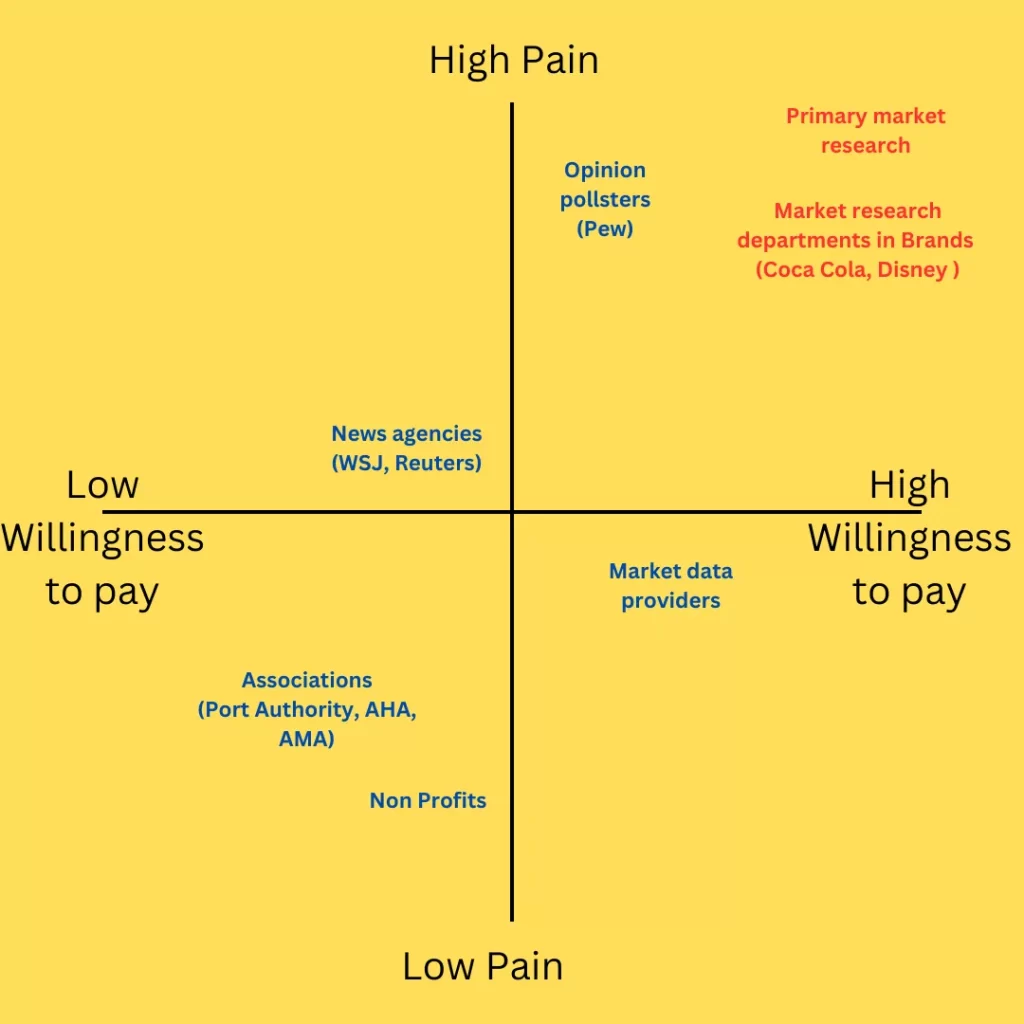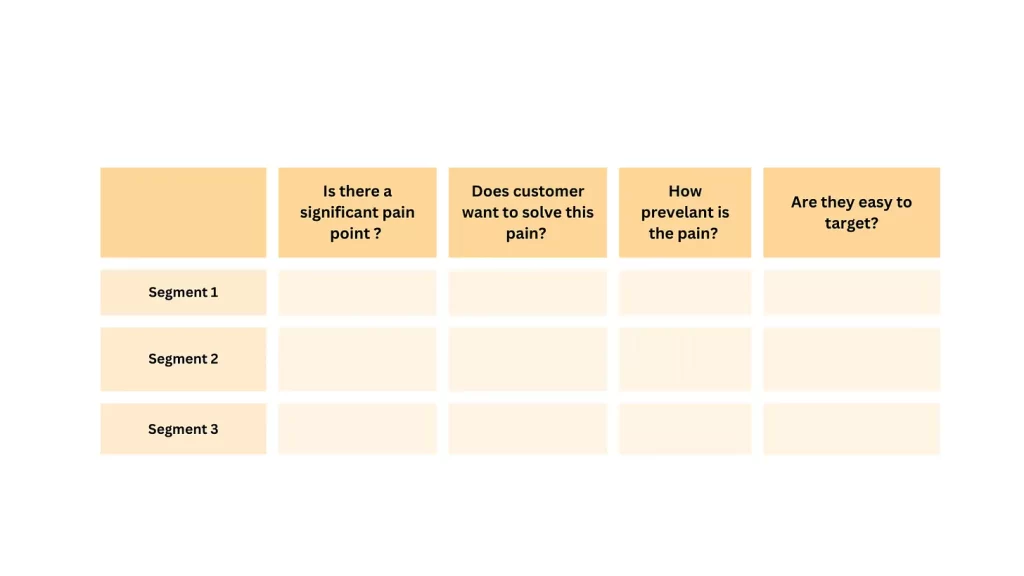How to select the right niche to start up
I was an early employee and a first product hire at iCharts, a data visualization startup. At that time, we were not sure who our ideal customer will be. We had a basic MVP-ish software already built. Something we could show around to customers.
But where to start?
I drew up a list of many random companies who would be interested in data visualization software. As I came from a consulting background in business intelligence, my first connections were to my clients or consultants in the field. We quickly realize that competing in this large space of BI with the Tableaus of the world would be hard. It was a crowded space so we decided not to play here.
We kept looking for other segments. I used to read the Wall Street Journal which has a ton of charts and graphs. I would note down the source of each chart. The charts would be generated from data by many organizations such as industry research, surveys, associations, and many other types. So I now have a starting list of categories to go after. I would cold call or email someone in these companies. (Who to cold call is also a challenge, but thats a discussion for another post)
I ended up cold calling around 80 companies in the first 2 months or so. And then we started seeing some patterns. I drew the classic 2×2 matrix and started mapping these segments.

As you can see, some segments had pain point with data visualization but no willingness to pay. Some had budgets but the use cases were not compelling. We settled on the primary market research on the top right. Now we could craft the product and the positioning to one segment and we were able to get customers quicker.
Our solution was horizontal, and could work for anyone. However, positioning your product and the specific features will vary for each.
The adage is that if you work for everyone, you work for no one. By focussing on one segment, we had a clear message that we were able to fine tune. Our sales cycles became more predictable. We could qualify customers better. And we adapted the product to the key use case in this segment.
Remember, a startups goal is to get repeat customers quickly. In my startup advising, I ask founders to start with a small niche. You want to get repeat customers early on, and the best way is to go to market for one customer type with a solution that you can sell repeatedly.
This is especially true for platform solutions or horizontal solutions. Founders typically brag that their product can work for any use case. And while that may be true, it is really hard to go to market with that approach. Some exceptions are there.
Which niche should you start with?
My thinking has evolved from my simplified 2×2 grid.
Here is a simple framework I now ask founders.

Let’s say you are talking to different types of customers during your discovery process. For each segment, you evaluate these 4 points and determine which segment or niche to start with.
1. Validation that the pain point exists
The very first criteria is that the pain point is significant enough for the segment that they are willing to pay money for it. In my example, above, I spoke to various associations but they never had a significant pain point. They could just mutter along with inefficient processes. There was no incentive for them to create value.
(FYI – there are roughly 16,000 associations in USA alone and about 20% of them deal with research data. American Hospital Association has years of medical data on their web site….mostly in XLS or PDF files. )
2. Customer motivation
This is a very important point that most product managers or founders fail to account for, including myself. Not all problems or pain points are either worth solving or a priority for the customer. You may discover a pain point but for now, the customers have other priorities they want to solve for.
”Is this a significant problem?” will get a you half painted picture.
”Is this a significant problem now compared to other issues?” will get you closer to a complete picture.
It is essential to know where the motivation of the customer is in the hierarchy of pain points.
See my article on the pain point ladder (How customers decide where to spend on software?)
3. Prevalence of the pain point
Is the pain point you are trying to solve pervasive enough to a large number of customers. This is hard to judge because you simply cannot talk to everyone out there. But you can find patterns.
You need to solve those pain points that are large enough that you can repeatedly sell your product to a large number of customers. If the pain point is very specific to a sub set of customers, then it will be hard to grow because you will saturate the market sooner with nowhere to grow.
4. Targetable
Now that you have identified a significant pain point for a large base of customers who are motivated to pay for a product, the next question is are they easy to reach?
I don’t mean this from a go to market or demand gen perspective. That will come later. What I mean is can you easily identify the persona and relate the use case to them? Can you identify the sub segment you are trying to niche to?
It is easier to say that we are targeting sales reps in insurance industry. It is a bit vague to say we are targeting business analysts. There are so many types of business analysts.
The finer your ability to target a persona, the easier they will be to reach from a go to market perspective.
Now that you have evaluated, these 4 factors, you can choose the right niche to start with.
Another comment I hear from founders is that their investors are saying that they should go wide after a big TAM. My response is that they should separate the vision from execution. Yes, your vision is large and addresses a big TAM.
But to start, you start small. You have to niche down.

